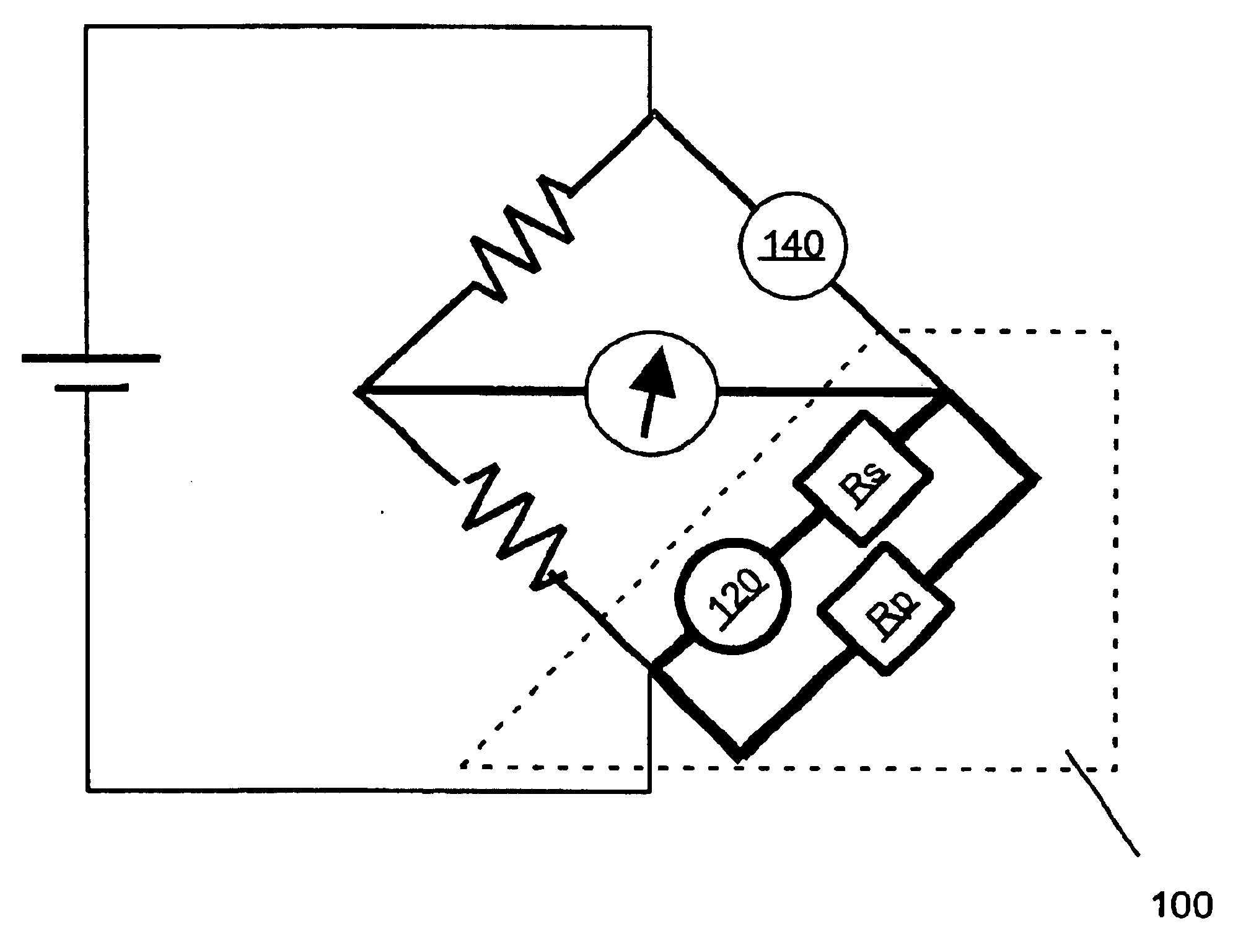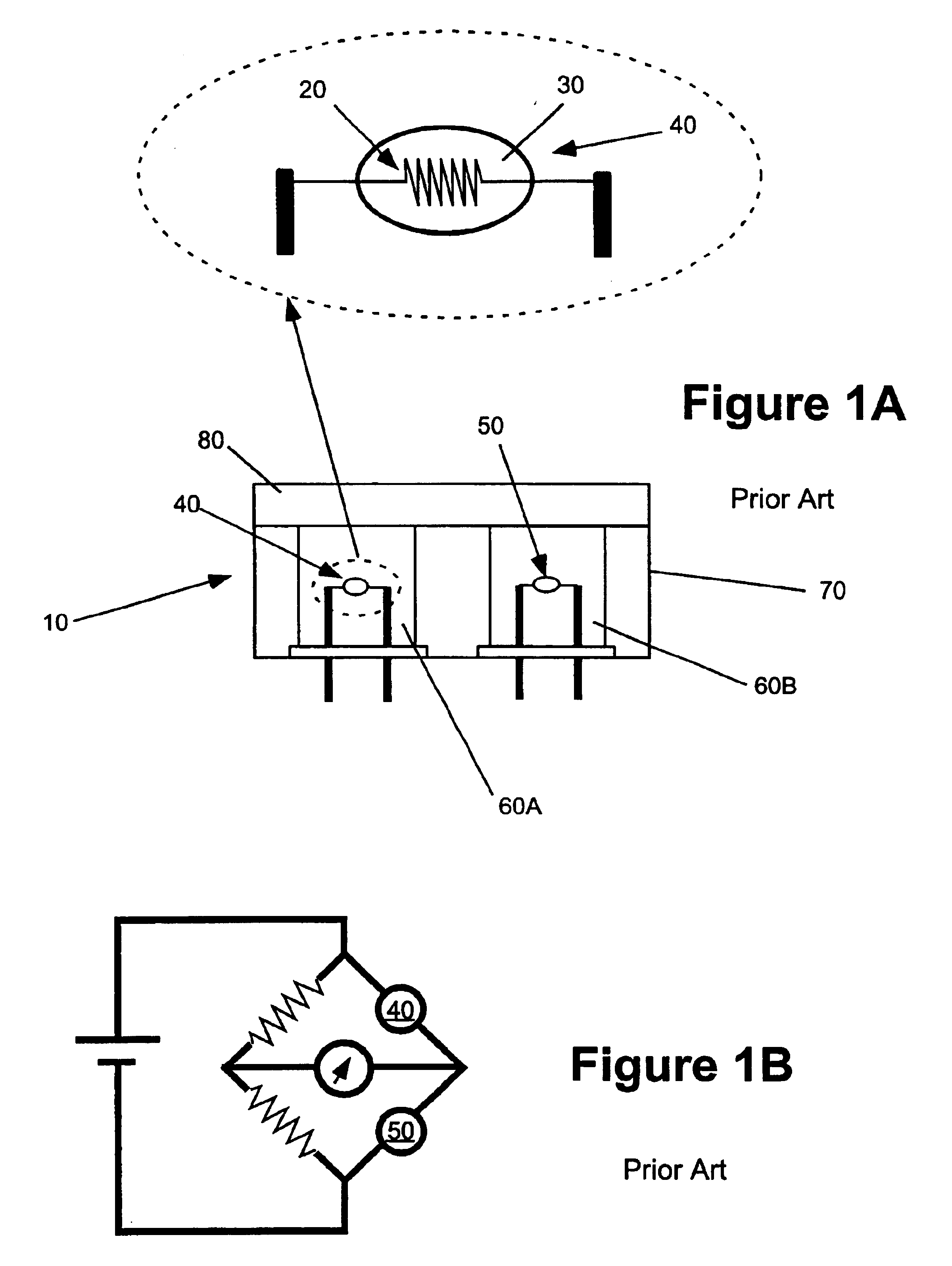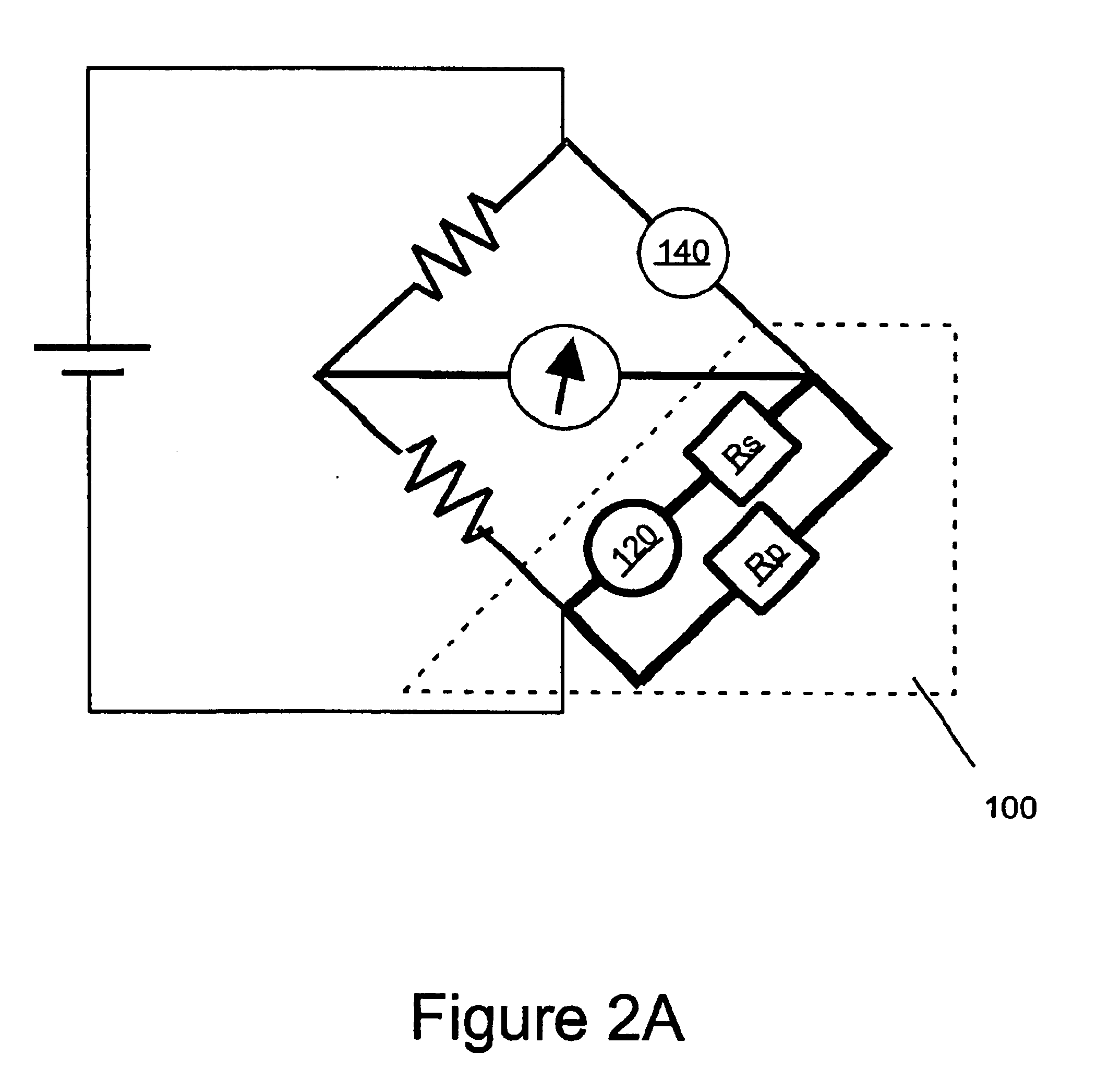Catalytic sensor
a sensor and catalytic technology, applied in the field of catalytic sensors, can solve the problems of sacrificing accuracy, causing errors in the measurement of combustible gas concentration, and high cost of catalytic elements and compensating elements, so as to reduce the cost of sensor manufactur
- Summary
- Abstract
- Description
- Claims
- Application Information
AI Technical Summary
Benefits of technology
Problems solved by technology
Method used
Image
Examples
Embodiment Construction
[0027]In the combustible gas sensors of the present invention, expensive compensating elements are eliminated. In several embodiments, such compensating elements are replaced with an inexpensive thermistor network. In general, a thermistor is an inexpensive, commercially available resistor made of materials having resistance that vary rapidly and predictably with temperature. The resistance of a thermistor may either increase or decrease as temperature increase. In the present invention, a thermistor is used to provide the ambient temperature compensating function of a conventional compensating element. As discussed in greater detail below, for catalytic elements of limited geometric or external surface area, accurate measurements of analyte gas concentration can be made while compensating only for ambient temperature changes.
[0028]In the case of a thermistor network, the configuration of the measurement circuitry of the present invention depends upon the direction (that is, directl...
PUM
 Login to View More
Login to View More Abstract
Description
Claims
Application Information
 Login to View More
Login to View More - R&D
- Intellectual Property
- Life Sciences
- Materials
- Tech Scout
- Unparalleled Data Quality
- Higher Quality Content
- 60% Fewer Hallucinations
Browse by: Latest US Patents, China's latest patents, Technical Efficacy Thesaurus, Application Domain, Technology Topic, Popular Technical Reports.
© 2025 PatSnap. All rights reserved.Legal|Privacy policy|Modern Slavery Act Transparency Statement|Sitemap|About US| Contact US: help@patsnap.com



